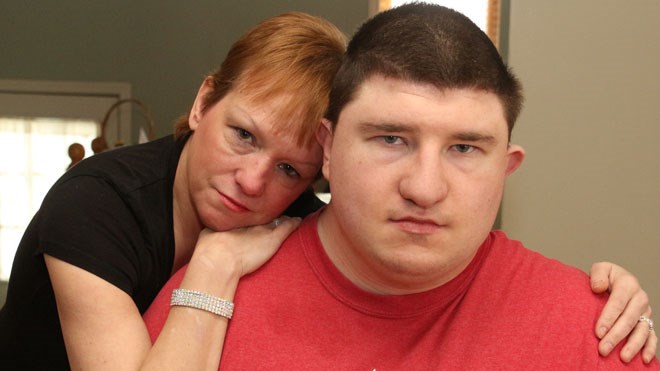In his 25 years, Jordan Hack has survived five open-heart surgeries, but it could be a hepatitis C infection he contracted when he was an infant that ends his life.
Hack was born with velacardiofacial syndrome, a genetic disorder that, in effect, has left him with a weak heart.
When he was a day old, he had open-heart surgery at Toronto's Hospital for Sick Children.
Four years later, his mother, Shelly Hack, found out her son had fallen victim to the largest public health disaster in Canadian history.
Hack was one of 20,000 Canadians to be infected with hepatitis C, due to infected blood products that found their way into hospitals across the country in the late 1980s and early 1990s.
Another 2,000 hemophiliacs and transfusion recipients contracted HIV/AIDS due to the tainted blood scandal.
“They could save his heart, but they can't save his liver,” said Shelly Hack. “His chances for every surgery were five per cent. He beat all the odds to be here with me, and that's going to take him. He fought hard.”
Hepatitis C causes an inflammation of the liver and can eventually lead to the vital organ's failure.
The disease saps the 25-year-old's energy, forcing him into a deep sleep for 19 hours of every day. His liver limps along, working poorly and leaving him in constant pain from the toxins left in his system by the damaged organ.
“I basically can't do anything,” he said. “I want the people who did this in prison. They robbed me of my life.”
Hepatitis C can be cured by following a drug treatment regime over a period of eight to 12 weeks. But the drugs can have severe side effects.
Shelly Hack compared it to chemotherapy, which in a sense it is.
Because of her son's weak heart — which functions at around 44-per-cent capacity — the treatment could kill him.
After a class-action lawsuit, the government set aside a $1.2-billion fund to compensate those who contracted hepatitis C due to tainted blood transfusions between 1986 and 1990.
The compensation is based on how sick an individual had become due to the blood transfusion.
The onus is on families to receive the medical tests necessary to prove their loved ones are sick enough to receive certain levels of compensation.
For Hack, that means travelling to Toronto to see specialists, and undergo a number of invasive tests.
“The steps the families have to go through to access any of this (compensation) is just unbelievably hard,” said Nickel Belt MPP and NDP health critic France Gélinas. “Why do families have to climb Mount Everest every time to be able to access what the court says they are allowed to have?”
Most of the people affected by the tainted blood scandal have already died.
At its outset, there was no cure for hepatitis C, and HIV/AIDS spelled a rapid death sentence.
Hack said she isn't expecting to become rich from any compensation, but wants justice for her son, so he can enjoy the time he has left.
Jordan said he has always wanted to travel to Florida so he can visit the Harry Potter theme park in Orlando.
But because of his poor health, his mother said it's not possible for them to get travel insurance. He's too high risk, she said.
“He says, 'Mom, I'm so tired of feeling like shit.' And I don't know what to say,” she said. “As a parent, it's excruciating.”
Shelly Hack asked NortherLife.ca to share her phone number, in case any other families affected by the tainted blood scandal would like to speak with her. She can be reached at 705-207-7473.
Join Sudbury.com+
- Messages
- Post a Listing
- Your Listings
- Your Profile
- Your Subscriptions
- Your Likes
- Your Business
- Support Local News
- Payment History
Sudbury.com+ members
Already a +member?
Not a +member?
Sign up for a Sudbury.com+ account for instant access to upcoming contests, local offers, auctions and so much more.
